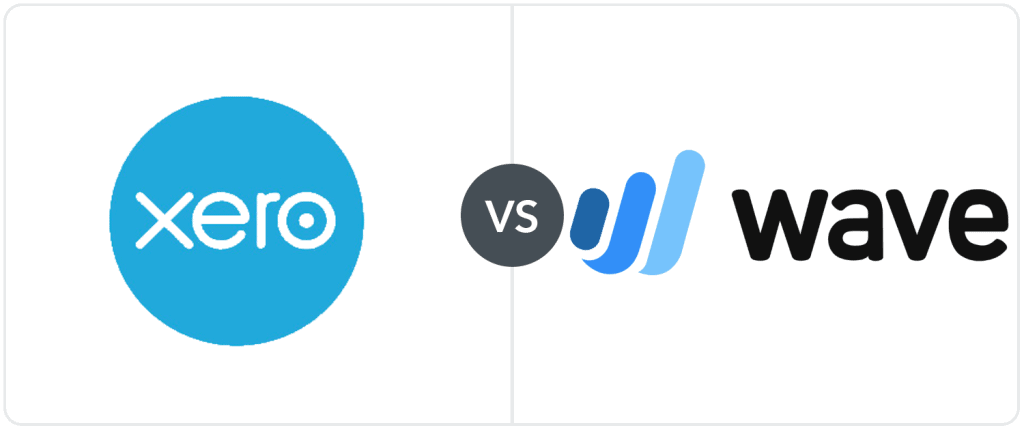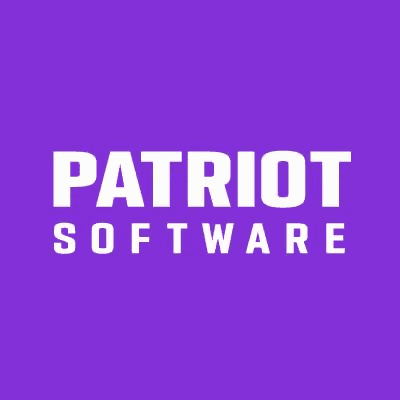Wave's free and low-cost plans are great for small businesses, while Xero's more robust feature set is well suited for medium to large businesses.

|
Xero |
Wave |
| Ideal For |
Medium to large businesses |
Medium to large businesses |
| Pricing |
$15-$78/month |
$0-$16/month |
| Standout Features |
- Numerous advanced features
- 1,000+ integrations
- Strong security
|
- Forever free plan
- Easy-to-use interface
- Supports multiple companies & users
|
| What’s Missing |
- Built-in payroll
- Built-in payment processing
- Phone support
|
- Integrations
- Advanced reporting
- Features like time tracking & inventory management
|
Xero VS Wave: At A Glance
On the surface, Xero and Wave seem to be quite similar. Both have received a solid number of rave reviews across the internet, making it difficult to decide which is truly the better software. But once you dig a little deeper, you’ll see that there are some very distinct differences between Xero and Wave.
Xero is a robust accounting solution that rivals QuickBooks in terms of capability and popularity. It offers strong accounting, 800+ integrations, access for unlimited users, and an impressive feature selection.
Although Xero says it makes “small business” software, the steep pricing and depth of features are much more suitable for mid-to-large-sized businesses.
Wave, on the other hand, is designed with small businesses in mind. The software is easy to use and boasts standard features such as invoicing, contact management, and personal and business expense tracking.
Best of all is the pricing. Wave offers a forever-free plan with no strings attached, making it a great choice for budget-conscious small business owners.
It’s also possible that neither option fits the bill. If that’s the case, we invite you to check out our picks for best accounting software for small businesses to see other top choices that may be better for your small business.
Where Xero Wins
As far as accounting features go, few software options can compare to Xero. Regardless of which plan you choose, all users get access to inventory management, accounts payable, and other accounting features. Xero’s well-developed contact management feature is especially worth checking out.
Xero also offers 55+ reports, which far exceeds the 12 offered by Wave. Xero also outperforms Wave in terms of its integrations, with over 1,000 available for download in the Xero app store.
Xero also has a stellar reputation within the industry for its security. The company uses data encryption and two-step authentication and performs regular security audits. It also boasts an uptime of 99.97%.
Finally, Xero has strong mobile apps that are perfect for on-the-go accounting, in contrast to other accounting apps that only offer limited features. Xero has received thousands of positive reviews for its apps for both iOS and Android devices.
Here’s a brief summary of where Xero stands out:
- Robust set of features
- Numerous reports
- 1,000+ integrations
- Excellent security
- Strong mobile apps
Where Xero Falls Short
One area where Wave has an advantage is with pricing. While Xero offers a $15/month Early plan, there are limitations that make this plan only suitable for microbusinesses and freelancers — only five bills and 20 invoices can be sent per month and many features are unavailable.
To get the most out of Xero, we recommend upgrading to Xero’s Growing or Established plans, both of which are significantly more expensive than Wave.
Another expense to keep in mind is that while Xero supports multiple businesses under one account, each business will be charged a separate monthly subscription fee. This could add up quickly for users who want to balance the books for multiple businesses.
If you want a built-in payroll, you’re out of luck, although Xero integrates directly with Gusto. There’s also no built-in payment processing, although third-party options like Stripe, Square, and Payroll are supported. You also won’t find live bookkeeping services with Xero like you would with other accounting software options like Wave or QuickBooks Online.
Finally, Xero has a semi-steep learning curve. While it isn’t too difficult to master, users with no accounting experience will need to devote some time to getting the hang of using this software.
In summary, here is where Xero falls short when compared with Wave:
- May be expensive for smaller businesses
- Semi-steep learning curve
- No built-in payment processing
- No built-in payroll
Where Wave Wins
Wave has a lot going for it, starting with its inexpensive pricing. Most free accounting software we’ve tested in the past has limited features, outdated interfaces, or is riddled with spam and ads. Wave’s free accounting software is user-friendly and is loaded with standard accounting features. This low cost and a good set of features make it suitable for smaller businesses.
We also like that Wave has built-in payroll, Wave Payments processing, and even professional bookkeeping services (all available for an additional fee). This is ideal for businesses that want everything in one place without having to worry about integrations.
Another area where Wave shines is that it supports multiple businesses at no additional cost. You can add up to 15 businesses to a single Wave account — no additional monthly fees required. Unlimited users are also supported with different permission levels available (permission levels can’t be customized).
Wave is also easy to use, making it a great choice for accounting beginners. The software is easy to navigate, and there are plenty of support resources available to help you make the most of the software.
Here’s how Wave stands apart:
- Forever free plan available
- Supports unlimited users
- Supports up to 15 businesses under one account
- Easy to use
- Suitable for small businesses
Where Wave Falls Short
One of the areas where Wave falls a bit short is in terms of its features. While it does offer a well-rounded set of features, especially at this low price point, it doesn’t include everything you’d find with bigger competitors like Xero.
Wave also lags when it comes to reports, offering just 12. It is worth mentioning that these reports do cover the financial basics, but you won’t find advanced reporting here.
Another area where Wave falls behind is with its number of integrations. Wave only has four integrations — far less than most of the options we’ve reviewed at Merchant Maverick — but one of those is a Zapier integration which connects to 1,000+ add-ons.
Finally, while Wave does have mobile apps, these apps are limited when compared to the actual cloud-based software. There are also several complaints from users of the free plan about bugs within the app since Wave added its paid Pro plan.
Here’s a wrap-up of where Wave could use some improvement:
- Lacks some advanced features
- Limited reporting
- Few integrations
- Mobile apps are limited and buggy
Xero VS Wave: Pricing Comparison
|
Xero |
Wave |
| Price |
$15-$78/month |
$0-$16/month |
| Number Of Users |
Unlimited |
Unlimited |
| Discounts Available |
|
|
| Payroll |
Gusto integration starts at $40/month + $6/month per employee |
$20-$40/month + $6/month per employee |
| Payments |
Varies by third-party processor |
Starts at 2.9% |
| Live Bookkeeping |
Not available |
Starts at $149/month |
Xero has three pricing plans that range from $15 to $78 per month. The company frequently runs promotions for new users, such as 75% off monthly pricing for the first three months. All plans support unlimited users. A 30-day free trial is available to test out the software.
Xero does not offer a built-in payroll but integrates nicely with Gusto. Payroll plans through Gusto start at $40/month plus $6/month per employee. Xero also does not have built-in payment processing, but you can choose from several third-party processors. Live bookkeeping services are not available.
Wave has two plans: one is forever free, and the other is $16/month. The paid Pro plan includes more automations, digital receipt capture, and discounted payment processing rates. You can save money on this plan by signing up for an annual subscription.
While on the subject of payment processing, Wave Payments start at 2.9% per transaction. Note that this lowest fee is available to subscribers of the Pro plan. Wave also has built-in payroll, which starts at $20/month plus $6/month per employee. Live bookkeeping services are available starting at $149/month.
Xero VS Wave: Features Comparison
| Feature |
Xero |
Wave |
| Invoicing |
|
|
| Inventory Management |
|
|
| Project Management |
Established Plan |
|
| Time Tracking |
Established Plan |
|
| Payroll |
Gusto integration |
|
| Budgeting |
|
|
| Live Bookkeeping |
|
Add-on |
| Reports |
55 |
12 |
| Integrations |
1,000+ |
4 |
Features is where Xero really sets itself apart from Wave. With Xero, you’ll find lots of advanced features, strong reporting, and numerous integrations.
However, don’t count Wave out just yet, as it does offer some things you won’t find with Wave, including built-in payroll and a live bookkeeping add-on.
Here’s a breakdown of how Xero and Wave differ in terms of its features.
Accounting
Both Xero and Wave offer the standard features you’d expect to find with accounting software.
With Xero, you’ll find features such as a customizable dashboard, invoices, quotes, contact management, bank reconciliation, inventory management, accounts payable, and expense tracking.
Xero also has more advanced features, such as class tracking, project management, time tracking, fixed asset management, and expense claims.
Wave has the features you would expect for small business accounting software. Wave’s notable features include bank reconciliation, expense tracking, invoices, accounts payable, contact management, and inventory management.
Wave does lack some of the more advanced features you’d find with Xero. However, many smaller businesses will find everything they need with Wave, and you can’t beat the cost (or lack thereof).
Invoicing
Xero offers decent invoicing, although it only has a single template. Wave has multiple invoice automations, including recurring invoices, automated invoice reminders, and bulk invoicing.
The biggest drawback is that unlimited invoicing is only available on Xero’s two more expensive plans. The Early plan is limited to just 20 invoices per month.
Wave has surprisingly well-developed invoicing, which is unlimited even on the free plan. Wave has three invoice templates that are customizable. There are also a handful of automations available, although automated payment reminders are only available with Wave Pro.
One drawback of Wave’s invoicing is that discounts and sales tax must be added manually.
Inventory
Xero has a pretty advanced inventory management feature that’s available on all plans. With this feature, you can add products and services, track inventory, make adjustments, and add attachments.
Wave’s inventory feature leaves much to be desired, as it is essentially a list of items. There are no inventory tracking or management options available.
Project Management
Xero has a project management feature that businesses can use to create projects, track expenses and time, and send invoices. The only caveat is that this feature is only available on the most expensive plan.
Wave does not have a project management feature.
Time Tracking
Subscribers of Xero’s Established plan can track time and add it to projects.
Wave does not offer time tracking.
Payroll
Xero no longer offers built-in payroll. Don’t be too disappointed, though, as the software integrates with Gusto. Gusto offers competitively-priced, easy-to-use payroll software that’s received high marks here at Merchant Maverick.
Wave does offer built-in payroll. Wave Payroll is also easy to use and is available under two different plans: one that’s available to 14 states and includes payroll tax services, and another lower-priced plan for self-service states.
Budgeting
Xero has a budgeting feature that allows you to create a three-month, six-month, 12-month, or 24-month budget. You can view a summary at any point to make sure you’re on track to your financial goals.
Unfortunately, Wave does not offer a budgeting feature.
Live Bookkeeping
If you need assistance with bookkeeping services, Wave has you covered. For an additional monthly fee, you can subscribe to Wave Advisors services. These services include bookkeeping support and accounting coaching.
Xero does not offer comparable services.
Reports
While both offer reporting, Xero has a more extensive reporting feature. You can create, view, and print 55 different reports covering everything from sales to cash flow and budget.
Wave has only 12 reports that cover the basics, such as balance sheets, profit and loss, and cash flow.
Integrations
Xero is at the top of its game when it comes to integrations with over 1,000 options available in the Xero App Store. API is also available for developers.
Wave, on the other hand, lags significantly behind, as it only integrates with PayPal, Etsy, Shoeboxed, and Zapier. API is available for developers.
Customer Support
While not technically a feature, it’s important to note a few things about the customer service and support of Xero and Wave.
Xero’s self-service support options are pretty top-notch, offering everything from the Xero Central help center to in-software help. It’s getting in touch with a human that’s the problem, as Xero does not offer phone support, and email responses could take up to a day to receive.
Wave also has customer service issues, especially if you’re on the free plan. If you’re on the free plan, self-help resources are all that are available to you. Phone support isn’t available to any user (paid or otherwise), although email and live chat options are available to Wave Pro subscribers.
Which Is Best For My Business: Xero Or Wave?
Both Xero and Wave are strong accounting options, although each better serves a different type of user.
Xero has strong accounting features you won’t find with Wave, like inventory management and project management. This more advanced software does come at a price, though — it is more expensive than Wave and also has a learning curve that may take some time to master.
Xero’s integrations set it apart from its competitors, allowing you to connect your software with other apps and software your business already uses. It also has plenty of reports to track your financials, and we can’t forget to mention its great security features.
While Xero may be a bit much for small businesses in terms of pricing, features, and ease of use, it’s an excellent solution for medium to large businesses or any business that wants a scalable software option.
Smaller businesses that don’t need advanced features and want software that’s easy to use from the start won’t be disappointed by what Wave has to offer. Its feature set offers more than enough for businesses with basic accounting needs, and the UI is beautifully designed and easy to navigate.
But perhaps what is most appealing about Wave is that its available at no cost. While you may have to pay a modest monthly fee for some automations, the free plan is pretty solid — even supporting multiple businesses and users.
Choose Xero If …
- You need strong accounting software for your mid- to large-sized business
- You want accounting software that easily integrates with other business apps and software
- You want a scalable accounting solution that grows with your business
Choose Wave If …
- You have a small business that doesn’t have complex accounting needs
- You want free (or low-cost) accounting software without limitations, ads, or an outdated UI
- You’re new to accounting software and want an easy-to-use solution
If you’re still undecided, the good news is that you can test out both options for free. Simply sign up for Wave’s free plan, or take Xero for a spin using its 30-day free trial. While everything may sound good on paper, you won’t know which option is right for your business without getting hands-on first.












